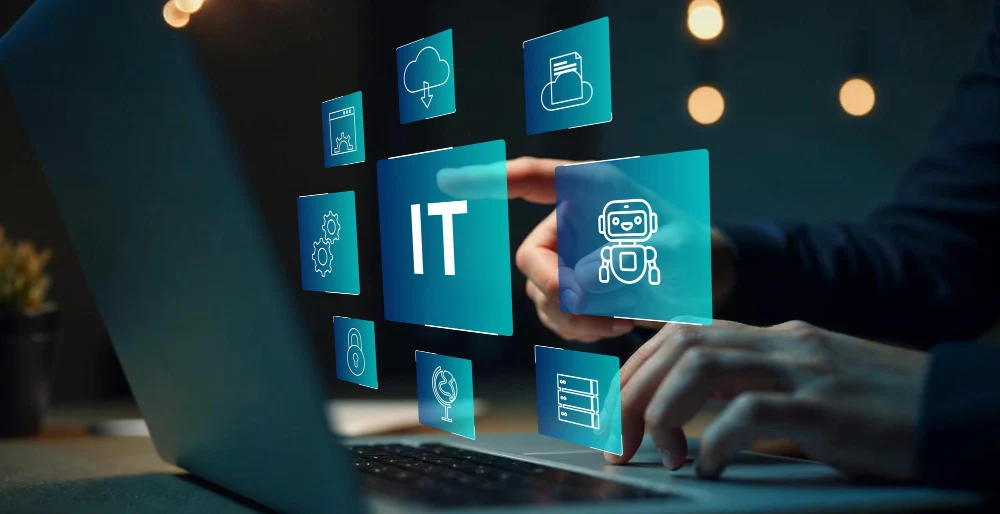In today’s hyper-connected, always-on enterprise landscape, every second of downtime, every unnoticed anomaly, and every delayed response can have cascading business implications. Traditional Network and Security Operations Centers (NOCs and SOCs), built on manual triage and siloed data, were never designed for this pace or scale.
As hybrid cloud, distributed applications, and 24×7 digital experiences become the norm, the question is no longer whether to modernize your NOC and SOC but how quickly you can embed intelligence, automation, and prediction into their DNA.
The Evolution of NOC & SOC Operations
Historically, NOCs and SOCs focused on reactive management responding to alerts, escalating incidents, and restoring services after disruptions. Analysts spent hours combing through dashboards, logs, and alerts to pinpoint the root cause of issues. Human fatigue, tool fragmentation, and alert noise often led to delayed Mean Time to Resolution (MTTR) and higher operational costs.
Modern enterprises, however, demand something radically different: autonomous, self-learning operations that anticipate incidents, isolate threats, and act before the business feels an impact.
The evolution from monitoring and maintenance to prediction and prevention represents a fundamental shift, one powered by AI, automation, and orchestration.
The AI Advantage
AI redefines how NOCs and SOCs sense, decide, and act.
- Proactive Detection: Predictive analytics and anomaly detection models identify deviations long before they become outages or attacks.
- Intelligent Alert Correlation: Machine learning algorithms correlate events across systems to cut through noise, turning thousands of daily alerts into a handful of prioritized insights.
- Agentic AI for Decision-Making: AI agents trained on operational runbooks and historical ticket data can autonomously perform triage, diagnose probable causes, and even execute corrective scripts.
- Self-Healing Systems: Automated playbooks trigger remedial actions such as restarting services, rerouting traffic, or patching vulnerabilities, closing the loop without human intervention.
At iOPEX, these capabilities are embedded into AI Command Agents, autonomous, context-aware entities that act as copilots for operations teams, augmenting human expertise with machine-driven precision.
Key Automation Levers for Modern Operations
Building an Intelligent NOC and SOC requires harmonizing multiple automation layers across monitoring, management, and remediation.
1. Predictive Monitoring
AI models continuously learn from telemetry data, network latency, throughput, error rates, and security events to forecast issues before they escalate. For example, in one Tier-1 telecom engagement, predictive alarm detection reduced service disruptions and boosted SLA compliance to 99.92 percent.
2. Automated Incident Lifecycle
From detection to resolution, automation eliminates friction:
- Auto-ticketing within ITSM tools like ServiceNow.
- AI-driven triage that assigns severity and ownership.
- Integration with orchestration engines and RPA bots for self-remediation.
- In a recent iOPEX deployment, this approach cut MTTR by 40 percent for a multi-site retail network.
3. Cognitive Knowledge Management
GenAI copilots such as the iOPEX NOC Copilot provide analysts instant answers to configuration or troubleshooting queries by mining historical tickets and knowledge bases in real time. This not only accelerates resolution but also ensures consistency across shifts and geographies.
4. Cross-Domain Correlation
A unified data layer that bridges the NOC and SOC eliminates blind spots. For instance, a performance anomaly in network latency may also signal a DDoS precursor. Correlating such patterns enables faster containment and cross-team collaboration.
5. Continuous Optimization
AI-driven volumetric analysis identifies false positives and redundant alerts, refining thresholds dynamically. Over time, this shifts the focus from firefighting to continuous service improvement, reducing alert fatigue and human error.
Transforming MTTR into MTTI: Mean Time to Intelligence
Traditional operations measure success by how fast an issue is resolved (MTTR). In the AI era, the new metric is MTTI, Mean Time to Intelligence: how quickly the system understands the problem, not just reacts to it.
By accelerating data collection, contextual analysis, and decision-making, AI shrinks the intelligence gap between detection and action.
At iOPEX, real-world implementations have demonstrated:
- 46 percent faster detection (reducing Mean Time to Detect from 15 to 8 minutes).
- 27 percent faster resolution through predictive maintenance and workflow automation.
- 20 percent reduction in latency in 5G NOC environments via real-time correlation and AI-assisted configuration.
These improvements redefine operational resilience, turning insights into impact at enterprise scale.
The Convergence of NOC and SOC
Network reliability and cybersecurity are now inseparable. A compromised device can trigger both service degradation and data exposure. AI enables the fusion of NOC and SOC intelligence, ensuring every anomaly is evaluated for both performance and threat vectors.
An AI-fused operations model brings:
- Unified visibility across IT, network, and security stacks.
- Shared context between incident response and threat hunting.
- Coordinated automation through integrated SIEM-SOAR-ITSM ecosystems.
For example, iOPEX’s integrated NOC-SOC operating model continuously monitors networks and security events 24×7, performs behavior-based threat detection, and executes automated containment workflows. The result: measurable improvements in both uptime and cyber-resilience.
Building the NOC & SOC of the Future
The journey to an AI-driven operations model isn’t just about technology. It requires a thoughtful transformation framework anchored on four imperatives:
1. Change Management
Automation changes roles, not relevance. Leaders must realign teams from manual responders to intelligent overseers. Upskilling analysts to interpret AI insights and refine models ensures sustained value realization.
2. Data Readiness
AI thrives on high-quality, contextual data. Centralizing telemetry, ticket, and threat data into a normalized schema is foundational. Data governance and observability frameworks are equally vital to prevent algorithmic bias or blind spots.
3. ITSM Integration
NOC and SOC automations must tie seamlessly into ITSM ecosystems (ServiceNow, Jira Service Desk, etc.), enabling end-to-end visibility from incident creation to closure, audit readiness, and SLA tracking.
4. Hybrid Cloud Enablement
Modern infrastructures span on-prem, edge, and multi-cloud environments. The future NOC and SOC must be cloud-agnostic, orchestrating telemetry and remediation across diverse platforms with equal agility.
The Business Case for Intelligent Operations
AI-first NOC and SOC models deliver quantifiable business impact:
Such outcomes are not theoretical; they are operational realities achieved across Fortune 500 enterprises and Tier-1 telcos supported by iOPEX.
From Reactive to Cognitive: Partnering for the Next Leap
Enterprises today stand at a turning point. Staying competitive demands more than uptime; it demands foresight. The NOC and SOC of tomorrow will not merely monitor, they will think, decide, and act.
iOPEX enables this evolution through its AI Command Agents, automation-first delivery models, and proven expertise across network and security operations. Our approach fuses deep infrastructure engineering with next-generation AI orchestration, helping clients transform operations from reactive cost centers into proactive intelligence hubs.
If your organization is ready to accelerate this journey, it’s time to move from Mean Time to Resolution to Mean Time to Intelligence.










